Traduzione generata automaticamente
Mostra originale
Mostra traduzione
Max Ernst (after) - Living Tree - Lithograph 1959 Dimensions: 32 x 24 cm Signed in the plate XXe siècle Max Ernst was born in Bruhl, a place near Cologne, in Germany. He was raised in a strict Catholic family, and both of his parents were disciplinarians who were dedicated to training their children into God-fearing and talented individuals. Although his father was deaf, Ernst learned so much from him, particularly when it comes to painting. In fact, much of his early years were lived under the inspiration of his father who was also a teacher. He was the one who introduced painting to Ernst at an early age. In 1914, Ernst attended the University of Bonn where he studied philosophy. However, he eventually dropped out of school because he was more interested in the arts. He claimed that his primary sources of interest included anything that had something to do with painting. Moreover, he became fascinated with psychology, among other subjects in school. Primarily, Ernst's love for painting was the main reason why he became deeply interested with this craft and decided to pursue it later on in his life. During his early years, he became familiar with the works of some of the greatest artists of all time including Claude Monet, Paul Cezanne and Vincent van Gogh. He was also drawn to themes such as fantasy and dream imagery, which were among the common subjects of the works of Giorgio de Chirico. During World War I, Ernst was forced to join the German Army, and he became a part of the artillery division that exposed him greatly to the drama of warfare. A soldier in the War, Ernst emerged deeply traumatized and highly critical of western culture. These charged sentiments directly fed into his vision of the modern world as irrational, an idea that became the basis of his artwork. Ernst's artistic vision, along with his humor and verve come through strongly in his Dada and Surrealists works; Ernst was a pioneer of both movements. It was Ernst's memories of the war and his childhood that helps him create absurd, yet interesting scenes in his artworks. Soon, he took his passion for the arts seriously when he returned to Germany after the war. With Jean Arp, a poet and artist, Ernst formed a group for artists in Cologne. He also developed a close relationship with fellow artists in Paris who propagated Avant-Garde artworks. In 1919, Ernst started creating some of his first collages, where he made use of various materials including illustrated catalogs and some manuals that produced a somewhat futuristic image. His unique masterpieces allowed Ernst to create his very own world of dreams and fantasy, which eventually helped heal his personal issues and trauma. In addition to painting and creating collages, Ernst also edited some journals. He also made a few sculptures that were rather queer in appearance. In 1920s, influenced by the writings of psychologist Sigmund Freud, the literary, intellectual, and artistic movement called Surrealism sought a revolution against the constraints of the rational mind; and by extension, they saw the rules of a society as oppressive. Surrealism also embraces a Marxist ideology that demands an orthodox approach to history as a product of the material interaction of collective interests, and many renown Surrealism artists later on became 20th century Counterculture symbols such as Marxist Che Guevara. In 1922 Ernst moved to Paris, where the surrealists were gathering around Andre Breton. In 1923 Ernst finished Men Shall Know Nothing of This, known as the first Surrealist painting. Ernst was one of the first artists who apply The Interpretation of Dreams by Freud to investigate his deep psyche in order to explore the source of his own creativity. While turning inwards unto himself, Ernst was also tapping into the universal unconscious with its common dream imagery. Despite his strange styles, Ernst gained quite a reputation that earned him some followers throughout his life. He even helped shape the trend of American art during the mid-century, thanks to his brilliant and extraordinary ideas that were unlike those of other artists during his time. Ernst also became friends with Peggy Guggenheim, which inspired him to develop close ties with the abstract expressionists. When Ernst lived in Sedona, he became deeply fascinated with the Southwest Native American navajo art. In fact, the technique used in this artwork inspired him and paved the way for him to create paintings that depicted this style. Thus, Ernst became a main figure of this art technique, including the rituals and spiritual traditions included in this form of art. Pollock, aside from the other younger generations of abstract expressionists, was also inspired by sand painting of the Southwest Native Americans. Meanwhile, Germany was completely under control by the Nazi Party during the year 1933. In 1937, Hitler was able to gather as much as 16,000 avant-garde artworks that were originally in display in the national museums of Germany. He also ordered to ship about 650 artworks to Munich in preparation for his art exhibition called the Degenerate Art or Degenerate Kunst. In the said art exhibition, Ernst had about 2 paintings that were on display. However, these 2 artworks were reported to have disappeared, with the possibility of have been destroyed. Soon, Ernst decided to leave France and headed to New York to start a new life after becoming interned as a German national thrice. In New York, he joined Piet Mondrian and Marcel Duchamp, who were his fellow avant-garde artists from Europe. With these two artists, Ernst inspired a number of aspiring and professional American artists during that period. Furthermore, it was in the United States where he met the gallery owner and socialite named Peggy Guggenheim, who eventually became Ernst's third wife. It was Guggenheim who paved the way for Ernst to enter the bustling art scene in New York. What captivated American artists about Ernst's works was his evident rejection of conventional styles and imageries in painting. These techniques were largely gained from his father's own styles, which he refused to follow in his later works. As young American artists were more interested in fresh and novel approaches to painting, this Ernst's unique style captured the attention of painters who became exposed to his artworks. In particular, Jackson Pollock was enthralled upon seeing the extraordinary works of Ernst. Hence, the young artist became one of Ernst's followers, among a few others. Specifically, it was Ernst's collage aspects in his paintings that fascinated those who viewed his masterpieces. Additionally, the German artist was able to encapsulate the unconscious with his experimentation with automatic writing and autonomism. In his later years, he divorced Guggenheim and married Dorothea Tanning, who was a surrealist painter based in Sedona, in Arizona. The couple soon moved to France, in 1953 and settled there. A year after, Ernst receive an award at the Venice Biennale, which was a prestigious awards contest. Ernst, alongside his wife Tanning, became very active as an artist. They toured to various places throughout the world to learn more about the different art techniques and inspired several artists who witnessed their unique pieces. Over the years there have been many artists associated with Surrealism which continues to exert its influence on art to this day. However, those major figures who were responsible for creating the golden age of Surrealism were Max Ernst, Joan Miro, Salvador Dali and Rene Magritte. In 1976, Ernst passed away, yet his legacy lived on as he continued to become a source of inspiration for artists throughout the world.
Max Ernst (dopo) - Albero vivente - Litografia 1959 Dimensioni: 32 x 24 cm Firmato nella lastra XXe siècle Max Ernst è nato a Bruhl, una località vicino a Colonia, in Germania. Fu cresciuto in una rigida famiglia cattolica, ed entrambi i suoi genitori erano disciplinari e si dedicavano a formare i loro figli come individui timorati di Dio e di talento. Anche se suo padre era sordo, Ernst ha imparato molto da lui, in particolare per quanto riguarda la pittura. Infatti, gran parte dei suoi primi anni furono vissuti sotto l'ispirazione di suo padre che era anche un insegnante. Fu lui a introdurre la pittura a Ernst in tenera età. Nel 1914, Ernst frequentò l'Università di Bonn dove studiò filosofia. Tuttavia, alla fine abbandonò la scuola perché era più interessato alle arti. Sosteneva che le sue fonti primarie di interesse includevano tutto ciò che aveva a che fare con la pittura. Inoltre, a scuola si appassionò alla psicologia, tra le altre materie. Principalmente, l'amore di Ernst per la pittura fu la ragione principale per cui si interessò profondamente a questo mestiere e decise di perseguirlo in seguito nella sua vita. Durante i suoi primi anni, divenne familiare con le opere di alcuni dei più grandi artisti di tutti i tempi tra cui Claude Monet, Paul Cezanne e Vincent van Gogh. Fu anche attratto da temi come la fantasia e l'immaginario onirico, che erano tra i soggetti comuni delle opere di Giorgio de Chirico. Durante la prima guerra mondiale, Ernst fu costretto a unirsi all'esercito tedesco, e divenne parte della divisione di artiglieria che lo espose molto al dramma della guerra. Un soldato nella guerra, Ernst emerse profondamente traumatizzato e altamente critico nei confronti della cultura occidentale. Questi sentimenti carichi alimentarono direttamente la sua visione del mondo moderno come irrazionale, un'idea che divenne la base della sua opera d'arte. La visione artistica di Ernst, insieme al suo umorismo e alla sua verve, emerge con forza nelle sue opere dadaiste e surrealiste; Ernst fu un pioniere di entrambi i movimenti. Furono i ricordi di Ernst della guerra e della sua infanzia che lo aiutarono a creare scene assurde, ma interessanti nelle sue opere. Presto, quando tornò in Germania dopo la guerra, prese seriamente la sua passione per le arti. Con Jean Arp, un poeta e artista, Ernst formò un gruppo di artisti a Colonia. Sviluppò anche una stretta relazione con i colleghi artisti di Parigi che propagandavano le opere d'arte dell'Avanguardia. Nel 1919, Ernst iniziò a creare alcuni dei suoi primi collage, dove fece uso di vari materiali tra cui cataloghi illustrati e alcuni manuali che producevano un'immagine un po' futuristica. I suoi capolavori unici hanno permesso a Ernst di creare il suo mondo personale di sogni e fantasia, che alla fine ha aiutato a guarire i suoi problemi personali e traumi. Oltre a dipingere e a creare collage, Ernst pubblicò anche alcune riviste. Fece anche alcune sculture che avevano un aspetto piuttosto strano. Nel 1920, influenzato dagli scritti dello psicologo Sigmund Freud, il movimento letterario, intellettuale e artistico chiamato Surrealismo cercava una rivoluzione contro i vincoli della mente razionale; e per estensione, vedeva le regole di una società come oppressive. Il Surrealismo abbraccia anche un'ideologia marxista che richiede un approccio ortodosso alla storia come prodotto dell'interazione materiale degli interessi collettivi, e molti rinomati artisti del Surrealismo divennero in seguito simboli della controcultura del XX secolo come il marxista Che Guevara. Nel 1922 Ernst si trasferì a Parigi, dove i surrealisti si riunivano attorno ad Andre Breton. Nel 1923 Ernst finì Men Shall Know Nothing of This, conosciuto come il primo quadro surrealista. Ernst fu uno dei primi artisti ad applicare L'interpretazione dei sogni di Freud per indagare la sua psiche profonda al fine di esplorare la fonte della propria creatività. Mentre si rivolgeva verso se stesso, Ernst stava anche attingendo all'inconscio universale con il suo comune immaginario onirico. Nonostante i suoi strani stili, Ernst si guadagnò una certa reputazione che gli fece guadagnare alcuni seguaci nel corso della sua vita. Ha persino contribuito a plasmare la tendenza dell'arte americana durante la metà del secolo, grazie alle sue idee brillanti e straordinarie che erano diverse da quelle di altri artisti del suo tempo. Ernst divenne anche amico di Peggy Guggenheim, che lo ispirò a sviluppare stretti legami con gli espressionisti astratti. Quando Ernst visse a Sedona, rimase profondamente affascinato dall'arte navajo dei nativi americani del sud-ovest. Infatti, la tecnica usata in queste opere d'arte lo ispirò e gli aprì la strada per creare dipinti che rappresentavano questo stile. Così, Ernst divenne una figura principale di questa tecnica artistica, inclusi i rituali e le tradizioni spirituali incluse in questa forma d'arte. Pollock, a parte le altre giovani generazioni di espressionisti astratti, fu anche ispirato dalla pittura su sabbia dei nativi americani del sud-ovest. Nel frattempo, la Germania era completamente sotto il controllo del partito nazista durante l'anno 1933. Nel 1937, Hitler fu in grado di raccogliere ben 16.000 opere d'arte d'avanguardia che erano originariamente in mostra nei musei nazionali della Germania. Ha anche ordinato di spedire circa 650 opere d'arte a Monaco di Baviera in preparazione per la sua mostra d'arte chiamata Arte Degenerata o Degenerate Kunst. Nella suddetta mostra d'arte, Ernst aveva circa 2 dipinti che erano in mostra. Tuttavia, queste 2 opere d'arte sono state segnalate per essere scomparse, con la possibilità di essere state distrutte. Presto, Ernst decise di lasciare la Francia e si diresse a New York per iniziare una nuova vita dopo essere stato internato tre volte come cittadino tedesco. A New York, si unì a Piet Mondrian e Marcel Duchamp, che erano i suoi colleghi artisti d'avanguardia europei. Con questi due artisti, Ernst ispirò un certo numero di aspiranti e professionisti americani in quel periodo. Inoltre, fu negli Stati Uniti che incontrò la gallerista e mondana Peggy Guggenheim, che alla fine divenne la terza moglie di Ernst. Fu la Guggenheim che aprì la strada a Ernst per entrare nella vivace scena artistica di New York. Ciò che affascinava gli artisti americani delle opere di Ernst era il suo evidente rifiuto degli stili e delle immagini convenzionali nella pittura. Queste tecniche furono in gran parte acquisite dagli stili di suo padre, che egli rifiutò di seguire nelle sue opere successive. Poiché i giovani artisti americani erano più interessati ad approcci freschi e nuovi alla pittura, lo stile unico di Ernst catturò l'attenzione dei pittori che furono esposti alle sue opere. In particolare, Jackson Pollock rimase affascinato nel vedere le straordinarie opere di Ernst. Quindi, il giovane artista divenne uno dei seguaci di Ernst, tra pochi altri. In particolare, furono gli aspetti del collage di Ernst nei suoi dipinti ad affascinare coloro che guardavano i suoi capolavori. Inoltre, l'artista tedesco era in grado di incapsulare l'inconscio con la sua sperimentazione con la scrittura automatica e l'autonomismo. Nei suoi ultimi anni, divorziò da Guggenheim e sposò Dorothea Tanning, che era una pittrice surrealista di Sedona, in Arizona. La coppia si trasferì presto in Francia, nel 1953 e si stabilì lì. Un anno dopo, Ernst ricevette un premio alla Biennale di Venezia, che era un prestigioso concorso di premi. Ernst, insieme a sua moglie Tanning, divenne molto attivo come artista. Viaggiarono in vari luoghi del mondo per imparare di più sulle diverse tecniche artistiche e ispirarono diversi artisti che furono testimoni dei loro pezzi unici. Nel corso degli anni ci sono stati molti artisti associati al Surrealismo che continua ad esercitare la sua influenza sull'arte fino ad oggi. Tuttavia, le figure principali che furono responsabili della creazione dell'età dell'oro del Surrealismo furono Max Ernst, Joan Miro, Salvador Dali e Rene Magritte. Nel 1976 Ernst morì, ma la sua eredità continuò ad essere una fonte di ispirazione per gli artisti di tutto il mondo.
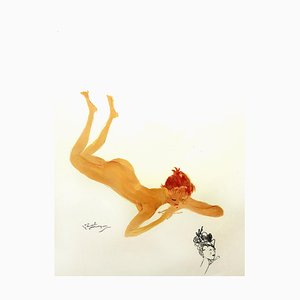
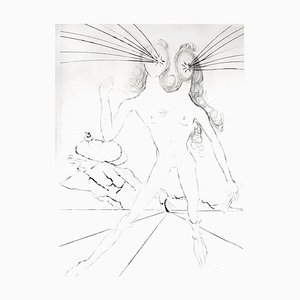
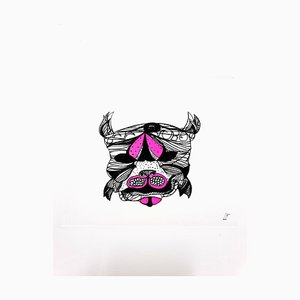
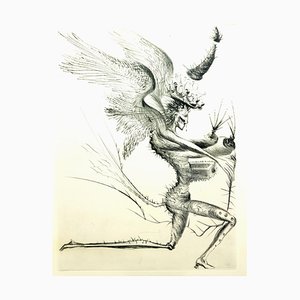

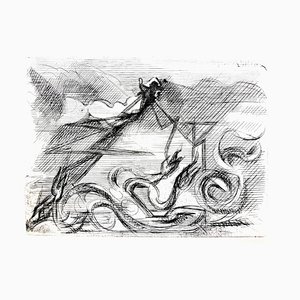
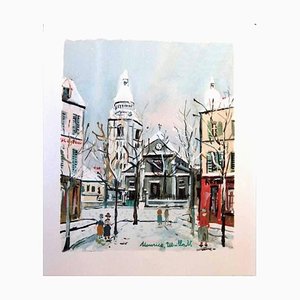

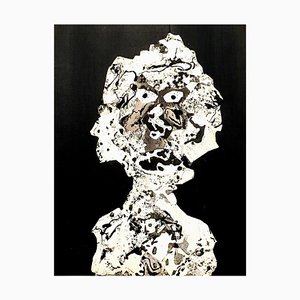
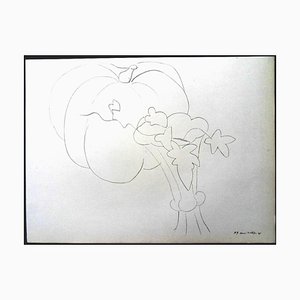
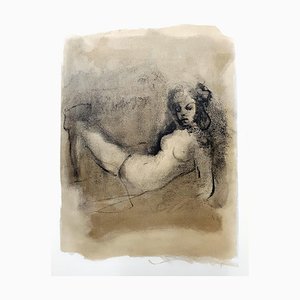


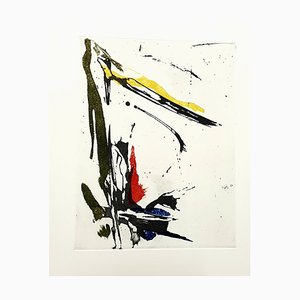
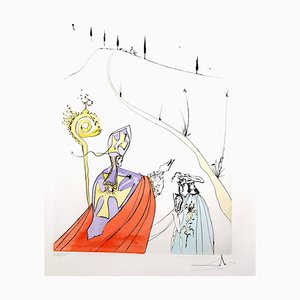
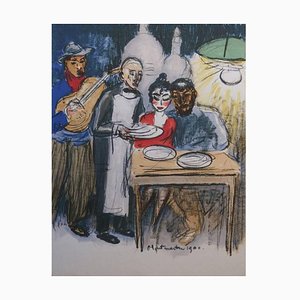
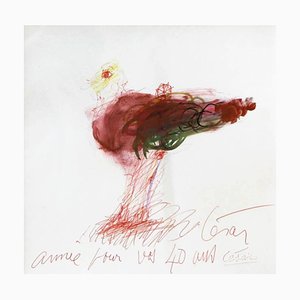
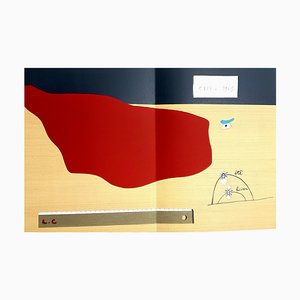

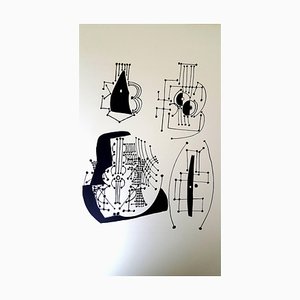
Contattaci
Fai un'offerta
Abbiamo notato che sei nuovo su Pamono!
Accetta i Termini e condizioni e l'Informativa sulla privacy
Contattaci
Fai un'offerta
Ci siamo quasi!
Per seguire la conversazione sulla piattaforma, si prega di completare la registrazione. Per procedere con la tua offerta sulla piattaforma, ti preghiamo di completare la registrazione.Successo
Grazie per la vostra richiesta, qualcuno del nostro team vi contatterà a breve.
Se sei un professionista del design, fai domanda qui per i vantaggi del Programma Commerciale di Pamono